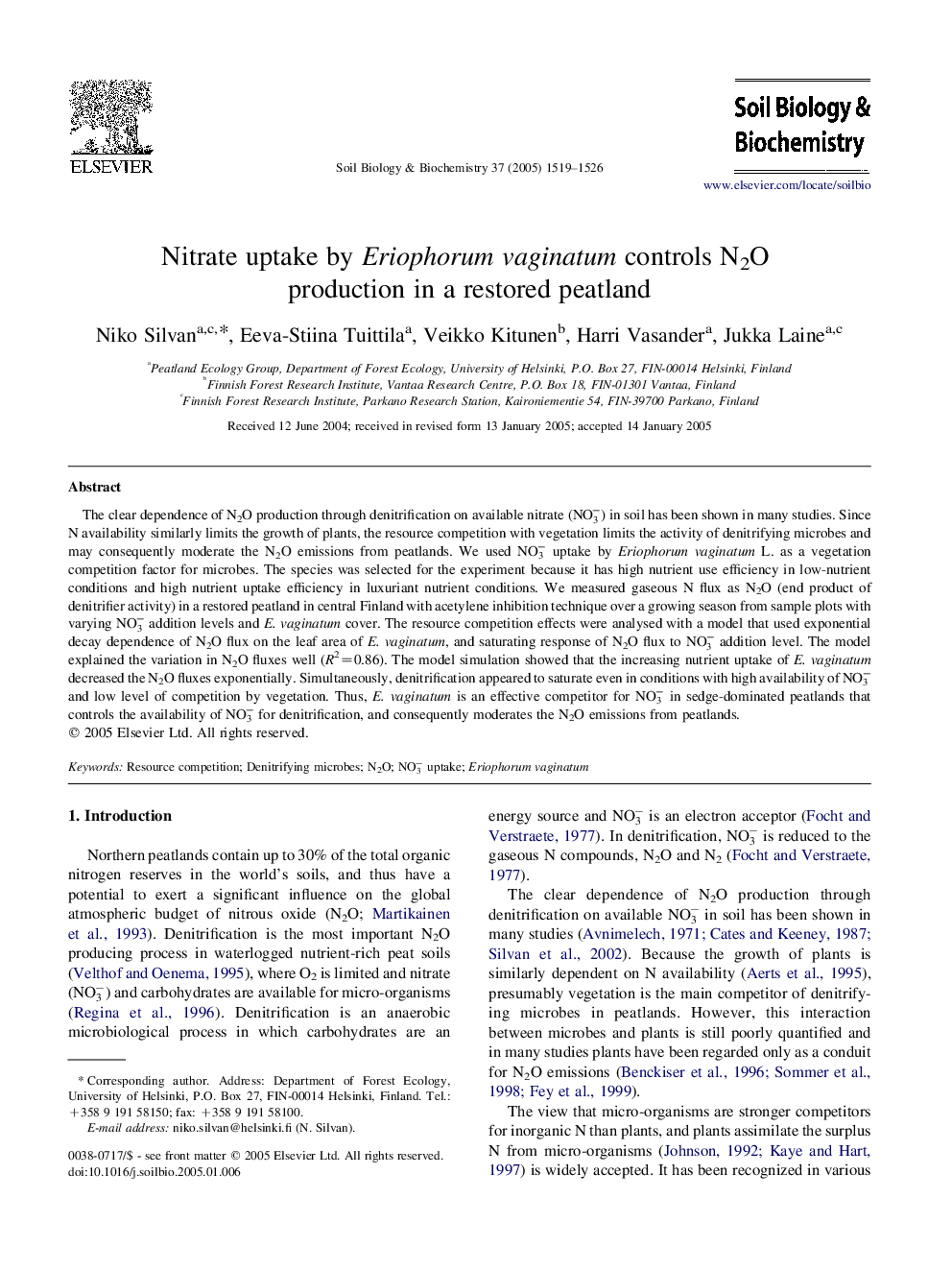| Article ID | Journal | Published Year | Pages | File Type |
|---|---|---|---|---|
| 10846237 | Soil Biology and Biochemistry | 2005 | 8 Pages |
Abstract
The clear dependence of N2O production through denitrification on available nitrate (NO3â) in soil has been shown in many studies. Since N availability similarly limits the growth of plants, the resource competition with vegetation limits the activity of denitrifying microbes and may consequently moderate the N2O emissions from peatlands. We used NO3â uptake by Eriophorum vaginatum L. as a vegetation competition factor for microbes. The species was selected for the experiment because it has high nutrient use efficiency in low-nutrient conditions and high nutrient uptake efficiency in luxuriant nutrient conditions. We measured gaseous N flux as N2O (end product of denitrifier activity) in a restored peatland in central Finland with acetylene inhibition technique over a growing season from sample plots with varying NO3â addition levels and E. vaginatum cover. The resource competition effects were analysed with a model that used exponential decay dependence of N2O flux on the leaf area of E. vaginatum, and saturating response of N2O flux to NO3â addition level. The model explained the variation in N2O fluxes well (R2=0.86). The model simulation showed that the increasing nutrient uptake of E. vaginatum decreased the N2O fluxes exponentially. Simultaneously, denitrification appeared to saturate even in conditions with high availability of NO3â and low level of competition by vegetation. Thus, E. vaginatum is an effective competitor for NO3â in sedge-dominated peatlands that controls the availability of NO3â for denitrification, and consequently moderates the N2O emissions from peatlands.
Related Topics
Life Sciences
Agricultural and Biological Sciences
Soil Science
Authors
Niko Silvan, Eeva-Stiina Tuittila, Veikko Kitunen, Harri Vasander, Jukka Laine,
